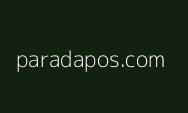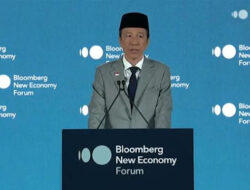This season, savvy shoppers aren’t just hunting for markdowns—they’re interpreting the promo codes landscape as a signal of when, where, and how to spend. And the insights it provides are more revealing than ever.
August: A Crucial Retail Crossroads
Retailers face a dual imperative in August: clear remaining summer stock and gear up for early fall campaigns. As a result, it’s a month of overlapping priorities—inventory optimization, price positioning, and audience engagement. Promo codes, with their flexibility and precision targeting, offer a solution to this retail balancing act.
Rather than blanket discounts across product lines, promo codes allow brands to move specific categories, reward certain customer behaviors, or react in real-time to performance metrics. This makes August a laboratory for testing what promotions resonate, which channels convert, and what seasonal demand curves look like in the digital age.
Promo Code Trends Shaping August 2025
Through platforms like Hotdeals, which specializes in verified brand-authorized promo codes, a number of clear trends have emerged that define the current landscape:
1. Category-Targeted Offers
Retailers are deploying promo codes to stimulate interest in stagnant or season-specific inventory. For example, late-summer apparel, patio furniture, air conditioning units, and vacation accessories often receive code-based boosts. These codes not only move stock but also drive cross-category sales by encouraging shoppers to browse entire collections.
2. Flash-Activated Codes
Time-sensitive promo codes have grown in popularity throughout August. These short-duration offers—ranging from 6-hour to 48-hour windows—create urgency and engagement. They’re particularly effective when layered atop existing clearance markdowns, generating a compounded value proposition for customers.
3. Mobile-Only Redemptions
Retailers continue to encourage mobile engagement, and promo codes are increasingly being pushed through app notifications and mobile-exclusive campaigns. This trend reflects a broader move toward mobile-first commerce, especially among Gen Z and millennial audiences.
4. Personalized Code Distribution
Promo code strategies now often integrate with CRM data. Shoppers who abandoned carts, clicked but didn’t buy, or showed interest in specific categories may receive personalized promo codes designed to convert at higher rates. These dynamic discounts also allow retailers to minimize mass devaluation while still driving sales.
Understanding What Promo Codes Reveal About Consumer Behavior
August promo code campaigns aren’t just about slashing prices—they’re a window into how consumers shop and respond to incentive models:
● Value Sensitivity Is Increasing: Promo code engagement typically rises as consumers become more budget-conscious near the end of summer travel and spending cycles. Codes allow for selective spending, giving customers more control over their final price point.
● Shoppers Are Research-Driven: Modern consumers now expect to find promo codes before completing purchases. Sites like Hotdeals have become essential tools in the shopping journey, signaling that promo code availability often affects where a customer chooses to shop, not just what they buy.
● Trust Matters: Inaccurate or expired codes erode consumer confidence. Verified and merchant-endorsed promo codes—like those featured on Hotdeals—are now preferred over crowd-sourced aggregators. This growing emphasis on reliability underscores the increasing sophistication of online shoppers.
Promo Code Strategy: A Retailer’s Tactical Advantage
While consumers clearly benefit from promo codes, retailers see them as essential for optimizing performance during critical retail windows. In August, this includes:
● Clearing Shelf Space: Promo codes help turn slow-moving seasonal stock faster than passive markdowns.
● Testing Pricing Elasticity: By offering different levels of discounts to segmented users, retailers can analyze price sensitivity in real-time.
● Enhancing Attribution: Promo code usage allows marketers to track the efficacy of campaigns by channel and audience segment, giving deeper insight into which promotions drive conversions.
More importantly, promo codes offer a flexible, data-driven alternative to mass discounting, preserving margins while still offering competitive pricing to target audiences.
The Role of Hotdeals in the Promo Code Ecosystem
As a platform committed to connecting consumers with verified, brand-approved promo codes, Hotdeals plays a pivotal role during the August retail transition. Unlike generic code aggregators, Hotdeals emphasizes:
● Code Accuracy and Validation: Ensuring that every promo code listed is current, tested, and user-ready.
● Merchant Collaboration: Working directly with brands to time promotions around key retail moments.
● Category Curation: Helping shoppers discover codes based on current clearance trends, including back-to-school, end-of-summer, and Labor Day promotions.
This trust-first model makes Hotdeals not just a coupon hub but a strategic resource for both shoppers and retailers during August.
Looking Ahead
As the retail industry becomes more agile and data-driven, promo codes are no longer just icing on the cake—they’re a core mechanism of engagement and performance optimization. In August 2025, the role of promo codes goes far beyond discounts: they shape the rhythm of buying, reflect evolving consumer expectations, and offer retailers a smart way to transition between seasons.
For shoppers hoping to beat the heat with value-packed purchases, and for retailers seeking high-impact tools for summer’s final chapter, one fact remains clear: promo codes are defining the dynamics of August like never before.











Artikel Terkait
Viral Video Ustadzah Ning Umi Laila Goda Anak Kecil, Netizen Murka: Ini Faktanya
Pramono Anung Dukung Penuh Reuni 212 2025 di Monas, Habib Rizieq Hadir & Dukungan untuk Palestina
Soedjono Hoemardani: Kisah Jenderal Dukun dan Penasihat Spiritual Soeharto
Video Penistaan Al-Quran Viral: Analisis Bahaya dan 4 Langkah Bijak Menyikapinya